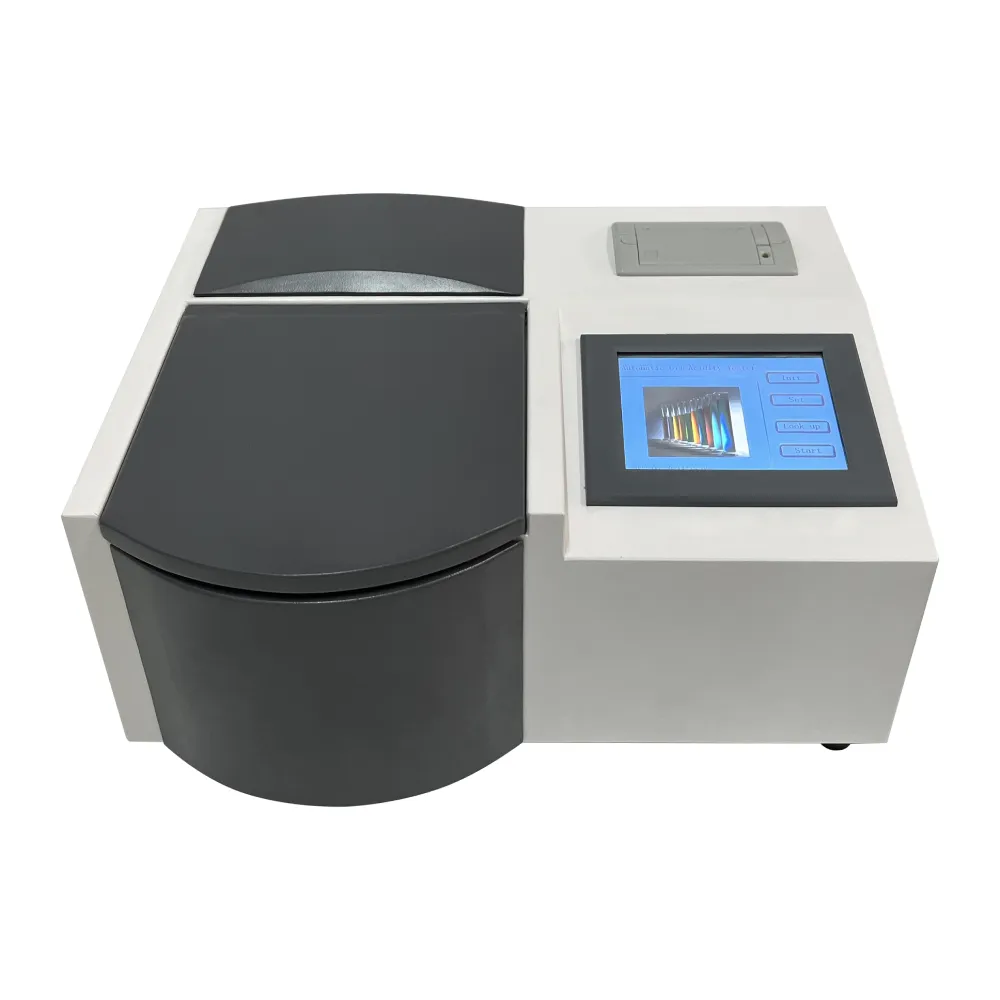TEL:
+86-0312-3189593
 English
English

Telephone:0312-3189593

Email:sales@oil-tester.com

-
 Afrikaans
Afrikaans -
 Albanian
Albanian -
 Amharic
Amharic -
 Arabic
Arabic -
 Armenian
Armenian -
 Azerbaijani
Azerbaijani -
 Basque
Basque -
 Belarusian
Belarusian -
 Bengali
Bengali -
 Bosnian
Bosnian -
 Bulgarian
Bulgarian -
 Catalan
Catalan -
 Cebuano
Cebuano -
 China
China -
 China (Taiwan)
China (Taiwan) -
 Corsican
Corsican -
 Croatian
Croatian -
 Czech
Czech -
 Danish
Danish -
 Dutch
Dutch -
 English
English -
 Esperanto
Esperanto -
 Estonian
Estonian -
 Finnish
Finnish -
 French
French -
 Frisian
Frisian -
 Galician
Galician -
 Georgian
Georgian -
 German
German -
 Greek
Greek -
 Gujarati
Gujarati -
 Haitian Creole
Haitian Creole -
 hausa
hausa -
 hawaiian
hawaiian -
 Hebrew
Hebrew -
 Hindi
Hindi -
 Miao
Miao -
 Hungarian
Hungarian -
 Icelandic
Icelandic -
 igbo
igbo -
 Indonesian
Indonesian -
 irish
irish -
 Italian
Italian -
 Japanese
Japanese -
 Javanese
Javanese -
 Kannada
Kannada -
 kazakh
kazakh -
 Khmer
Khmer -
 Rwandese
Rwandese -
 Korean
Korean -
 Kurdish
Kurdish -
 Kyrgyz
Kyrgyz -
 Lao
Lao -
 Latin
Latin -
 Latvian
Latvian -
 Lithuanian
Lithuanian -
 Luxembourgish
Luxembourgish -
 Macedonian
Macedonian -
 Malgashi
Malgashi -
 Malay
Malay -
 Malayalam
Malayalam -
 Maltese
Maltese -
 Maori
Maori -
 Marathi
Marathi -
 Mongolian
Mongolian -
 Myanmar
Myanmar -
 Nepali
Nepali -
 Norwegian
Norwegian -
 Norwegian
Norwegian -
 Occitan
Occitan -
 Pashto
Pashto -
 Persian
Persian -
 Polish
Polish -
 Portuguese
Portuguese -
 Punjabi
Punjabi -
 Romanian
Romanian -
 Russian
Russian -
 Samoan
Samoan -
 Scottish Gaelic
Scottish Gaelic -
 Serbian
Serbian -
 Sesotho
Sesotho -
 Shona
Shona -
 Sindhi
Sindhi -
 Sinhala
Sinhala -
 Slovak
Slovak -
 Slovenian
Slovenian -
 Somali
Somali -
 Spanish
Spanish -
 Sundanese
Sundanese -
 Swahili
Swahili -
 Swedish
Swedish -
 Tagalog
Tagalog -
 Tajik
Tajik -
 Tamil
Tamil -
 Tatar
Tatar -
 Telugu
Telugu -
 Thai
Thai -
 Turkish
Turkish -
 Turkmen
Turkmen -
 Ukrainian
Ukrainian -
 Urdu
Urdu -
 Uighur
Uighur -
 Uzbek
Uzbek -
 Vietnamese
Vietnamese -
 Welsh
Welsh -
 Bantu
Bantu -
 Yiddish
Yiddish -
 Yoruba
Yoruba -
 Zulu
Zulu
فېۋرال . 10, 2025 12:36
Back to list
PS-3520 5kv 10kv 15kv Insulation Resistance Tester Megger
When it comes to ensuring the safety and efficiency of your electrical systems, conducting a multimeter transformer test is essential. This process not only guarantees the reliable operation of your transformers but also helps in diagnosing potential issues before they escalate. In the realm of electrical testing, mastering this technique can significantly enhance your skill set, ensuring both home and industrial applications run smoothly.
Voltage testing comes next. For this, reconnect the transformer to a power source. Set your multimeter to the appropriate AC voltage range and measure the output voltage across the secondary winding. Testing the output against the rated voltage specified by the manufacturer is crucial. Discrepancies here could indicate issues like faulty insulation or core problems, some of the most common yet critical transformer ailments. Advanced users might proceed with a current test. By setting the multimeter to measure current, verify the current flowing through the secondary circuit. This test helps in confirming the transformer's load handling capability, ensuring that it functions within its designed parameters without risk of overheating or inefficiencies. Trusting a multimeter for transformer testing is a practice rooted in professional credibility. The tool's precise readings guide informed decisions, reflecting expertise and authority in diagnostics. Regular testing imbues a sense of trustworthiness, reassuring that the infrastructure it supports remains robust and reliable. Skillful execution of multimeter transformer tests underscores the practitioner's commitment to safety, efficiency, and professional excellence. With electrical systems being integral to everyday life, this practice not only exemplifies best safety measures but also showcases a deep respect for the engineering marvels that power our world. In essence, conducting transformer tests with a multimeter isn't just a task; it's an art form grounded in technical prowess and safety awareness. For those who master it, it heralds a greater capacity to maintain and optimize electrical systems, attesting to their experience and expertise in this critical field.


Voltage testing comes next. For this, reconnect the transformer to a power source. Set your multimeter to the appropriate AC voltage range and measure the output voltage across the secondary winding. Testing the output against the rated voltage specified by the manufacturer is crucial. Discrepancies here could indicate issues like faulty insulation or core problems, some of the most common yet critical transformer ailments. Advanced users might proceed with a current test. By setting the multimeter to measure current, verify the current flowing through the secondary circuit. This test helps in confirming the transformer's load handling capability, ensuring that it functions within its designed parameters without risk of overheating or inefficiencies. Trusting a multimeter for transformer testing is a practice rooted in professional credibility. The tool's precise readings guide informed decisions, reflecting expertise and authority in diagnostics. Regular testing imbues a sense of trustworthiness, reassuring that the infrastructure it supports remains robust and reliable. Skillful execution of multimeter transformer tests underscores the practitioner's commitment to safety, efficiency, and professional excellence. With electrical systems being integral to everyday life, this practice not only exemplifies best safety measures but also showcases a deep respect for the engineering marvels that power our world. In essence, conducting transformer tests with a multimeter isn't just a task; it's an art form grounded in technical prowess and safety awareness. For those who master it, it heralds a greater capacity to maintain and optimize electrical systems, attesting to their experience and expertise in this critical field.
Latest news
-
Testing Equipment Industry Sees Major Advancements in 2025: Smart & Precision Technologies Lead the WayNewsJun.06,2025
-
Applications of Direct Current Generators in Renewable Energy SystemsNewsJun.05,2025
-
Hipot Tester Calibration and Accuracy GuidelinesNewsJun.05,2025
-
Digital Circuit Breaker Analyzer Features and BenefitsNewsJun.05,2025
-
Benefits of Real-Time Power Quality Monitoring Devices for Industrial EfficiencyNewsJun.05,2025
-
Earth Fault Loop Testing in High-Rise Building Electrical SystemsNewsJun.05,2025



